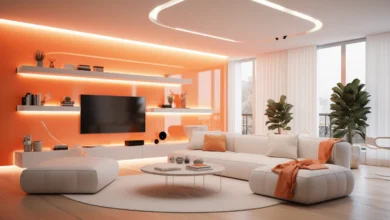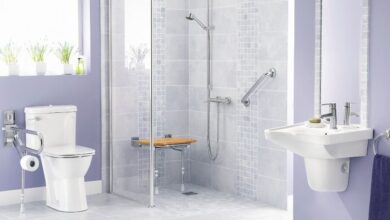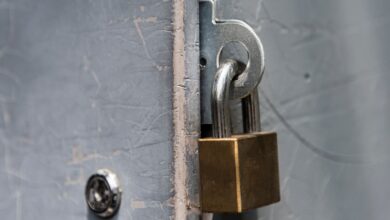Green Living in Style: Eco-Friendly Options for Custom Home Construction

In an era where environmental consciousness is paramount, building your custom dream home is not just an opportunity for luxury and comfort – it’s a chance to make a lasting impact on the planet.
Building a custom home is a unique chance to add green technology. This reduces the environmental impact. The following chart depicts the environmental impacts of green buildings in the US. According to the US Green Building Council, CO2 emissions were 34 percent lower. Green buildings consumed 25 percent less energy and 11 percent less water.
More homeowners want sustainable homes now. They want homes matching their eco-friendly lifestyle. They don’t want to sacrifice beauty or function. Luckily many options exist to build stylish, sustainable custom homes. Let’s dive more into green custom homes.
Sustainable Building Materials
When building a custom home, prioritize recycled, renewable, and responsibly sourced materials. This helps to reduce its carbon footprint. Reclaimed wood, for instance, can slash carbon emissions by up to 85% compared to new hardwood.
Sustainable bamboo is another excellent choice. It absorbs significantly more carbon dioxide than a comparable stand of trees. Other eco-friendly building materials are,
- Recycled concrete aggregates
- Plastic lumber made from repurposed milk jugs
- Detergent bottles
- Insulation crafted from denim scraps.
Many of these products surpass the durability of traditional building materials. For finishes, opt for zero- or low-VOC paints and stains to maintain healthy indoor air quality. Elk Ridge Custom Homes uses many of these sustainable materials to construct durable, eco-friendly residences. Sustainable building materials are gaining popularity due to financial and environmental benefits.
Energy-Efficient Design
Incorporating passive solar design principles into a custom home can reduce energy usage. Make use of strategic positioning of windows together with extended roof overhangs. This allows sunlight to heat interior spaces during cooler months. It also helps in preventing overheating in summer.
Energy-efficient homes designed this way can use up to 50% less energy for heating and cooling. High-performance windows with double or triple glazing also help retain conditioned air.
To operate at optimal efficiency heating and cooling systems should be sized correctly. Integrate smart home technology, like programmable thermostats and motion sensor lights. This can enhance energy savings. Additionally, weather-based irrigation controllers enhance efficiency.
Green Roofing and Insulation
A green roof offers numerous benefits beyond aesthetics. They include,
- Captures rainfall, reducing runoff by 50-60%
- Decreases stress on sewer systems
- Provides excellent insulation, reducing inside temperature fluctuations
- Helps mitigate the urban heat island effect
For top efficiency, use high R-value spray foam insulation (R-5.0 to R-6.5 per inch). Eliminate gaps and air leaks before installing insulation. Also take advantage of insulated doors, windows, and siding.
Renewable Energy Systems
Integrate solar, wind, or geothermal power. This transforms a custom home into a net-zero or energy-positive building. Renewable systems provide sustainable energy while reducing reliance on the grid.
Solar Photovoltaic (PV) Systems
- Can generate up to 70% of a home’s electricity
- Also power electric car chargers, battery storage, and auxiliary systems
- Solar PV pays the upfront costs within 10 years. This is through energy bill savings.
Residential Wind Turbines
- It is only possible if the home site has adequate wind resources
- Consider proper installation and permitting. This allows private turbines to reduce grid dependence by over 90%
Geothermal Heat Pumps
- Take advantage of underground temperatures to heat and cool homes
- Provide similar comfort as conventional systems
- But substantially lower monthly heating and cooling bills
Consult renewable energy experts. This helps you to plan the best systems and configurations for your custom home. Consider your electricity needs, budget, government incentives, and long-term energy savings.
Water Conservation Features
Custom homes allow homeowners to minimize water usage in eco-friendly ways. Numerous options exist to substantially reduce indoor and outdoor water consumption. Custom homes provide a chance to minimize water use through:
- Rainwater harvesting
- Greywater recycling
- Low-flow plumbing fixtures
Rainwater catchment systems collect runoff from the roof and filter it. It stores it in cisterns for non-potable uses such as irrigation and toilet flushing. Greywater recycling takes it a step further. It filters and reuses water from showers, sinks, and washing machines. And replenishes toilets or underground landscapes.
Both rainwater and greywater systems contribute to recharging local aquifers. Drought-tolerant native plants and efficient drip irrigation further reduce outdoor water usage.
Sustainable Interior Design
Choose environmentally responsible interior finishes and furnishings for a green custom home. Opt for,
- Sustainably harvested wood flooring
- Bamboo surfaces
- Natural linoleum
- Recycled glass tiles
Low- or zero-VOC paints and stains maintain healthy indoor air quality. Seek out Fair Trade Certified rugs and use organic, non-toxic mattresses in bedrooms. Strategic design choices also make the interior space more energy- and water-efficient.
Install daylighting features like skylights and light tubes. This reduces the need for artificial lighting during the daytime. Proper ventilation and indoor greenery keep air fresh and filtrated. Finally, buy quality furnishings built to last rather than cheaper disposable items.
Certifications and Regulations
Various green building certification programs can validate your custom home’s level of sustainability. These are the various green building certifications,
- LEED
- Passive House
- ENERGY STAR
- NAHB Green
Obtaining certification can qualify the home for tax credits, rebates, and financing incentives. When planning an eco-friendly custom home check federal, state, and local regulations on,
- Environmental standards
- Permitting requirements
- Zoning laws
The upfront investment in a green home pays off for many years. It leads to big cost savings and environmental benefits. Green custom homes may cost more at first. But experts say they are only 2-4% pricier than conventional homes. Also, eco-friendly homes are increasing in value and popularity.
Final Thoughts
Building a green custom home aligns luxury living with sustainability. Implementing eco-friendly systems and materials dramatically cuts energy and water use. This creates a beautiful, functional home that lasts for decades. Having a green custom home is the easiest way to help the suffering environment. You can also save yourself from the financial burden of energy bills.
Frequently Asked Questions
- What is the cost difference between a traditional and green custom home?
Green custom homes often cost just 2-4% more upfront than conventional homes. Energy and water savings offset much of this extra cost over time. Government incentives can also help reduce the premium.
- Do green homes require specialized contractors?
Yes, it’s wise to hire contractors experienced in green building. Look for LEED and high-performance certification. This is to ensure the proper installation of eco-friendly systems.
- How can I ensure my home is environmentally responsible?
Pursue respected certifications like LEED. Do an energy audit after construction to identify issues. Maintain renewable and water systems properly.



